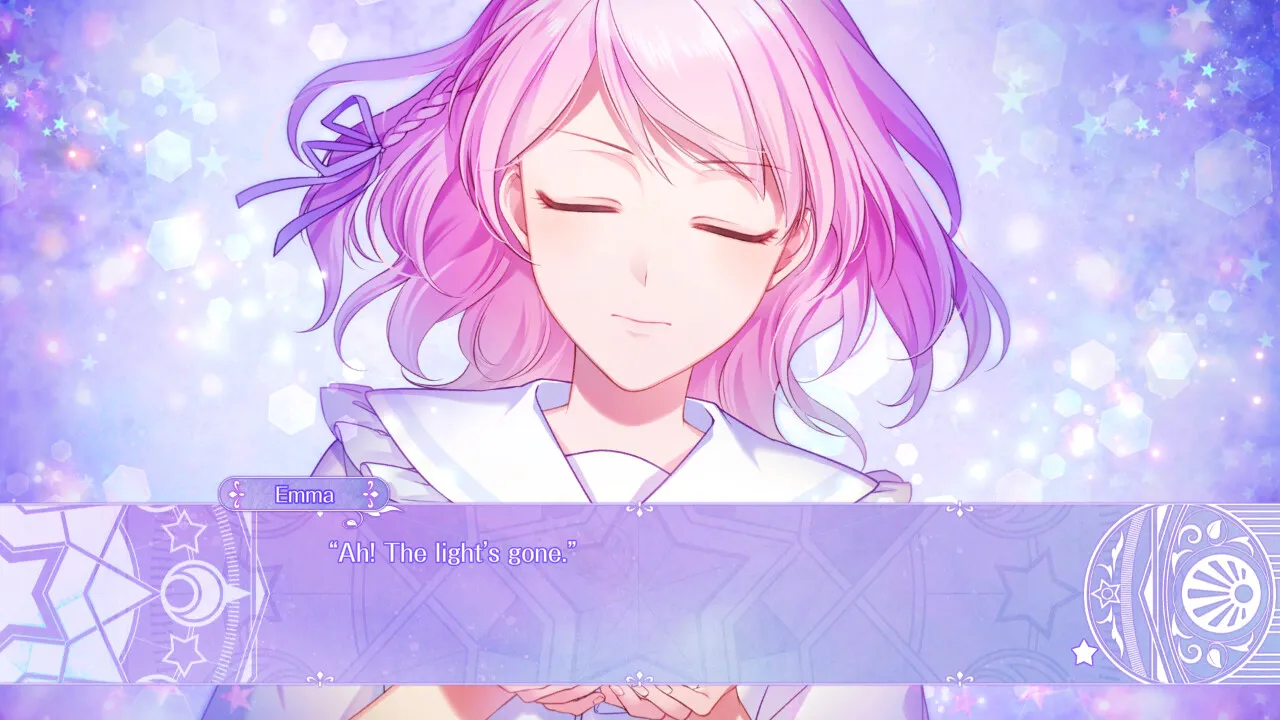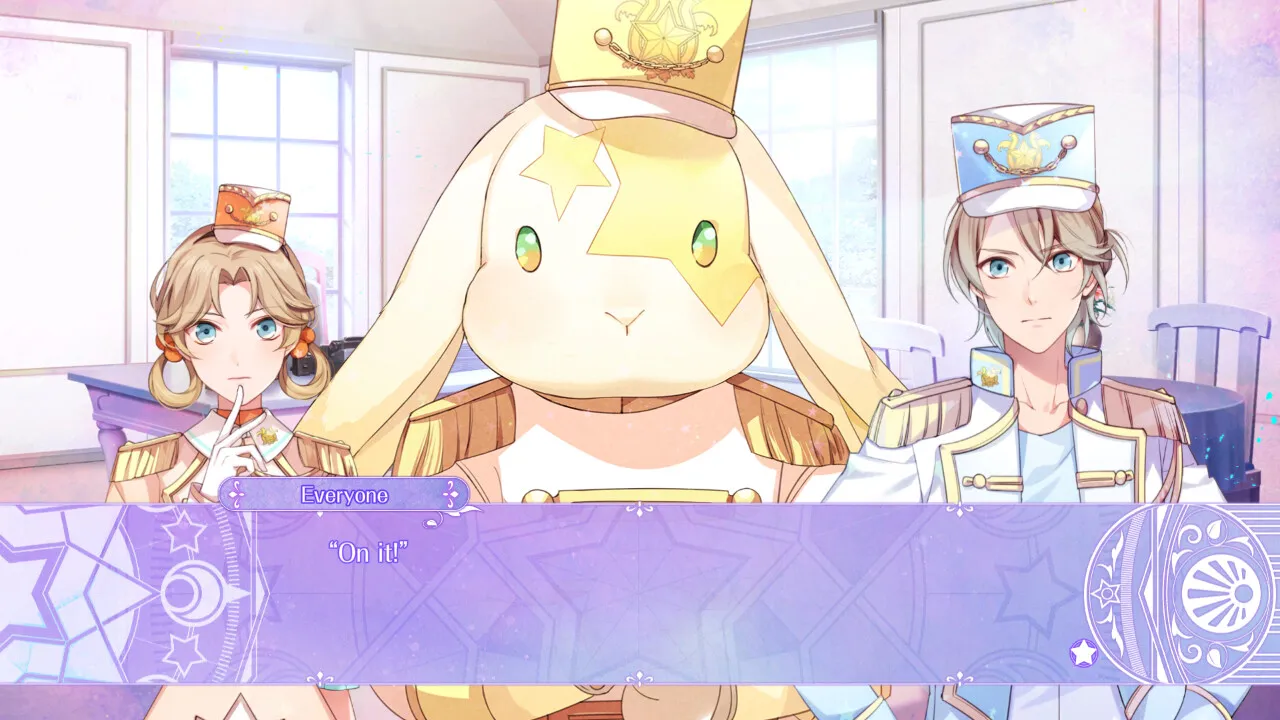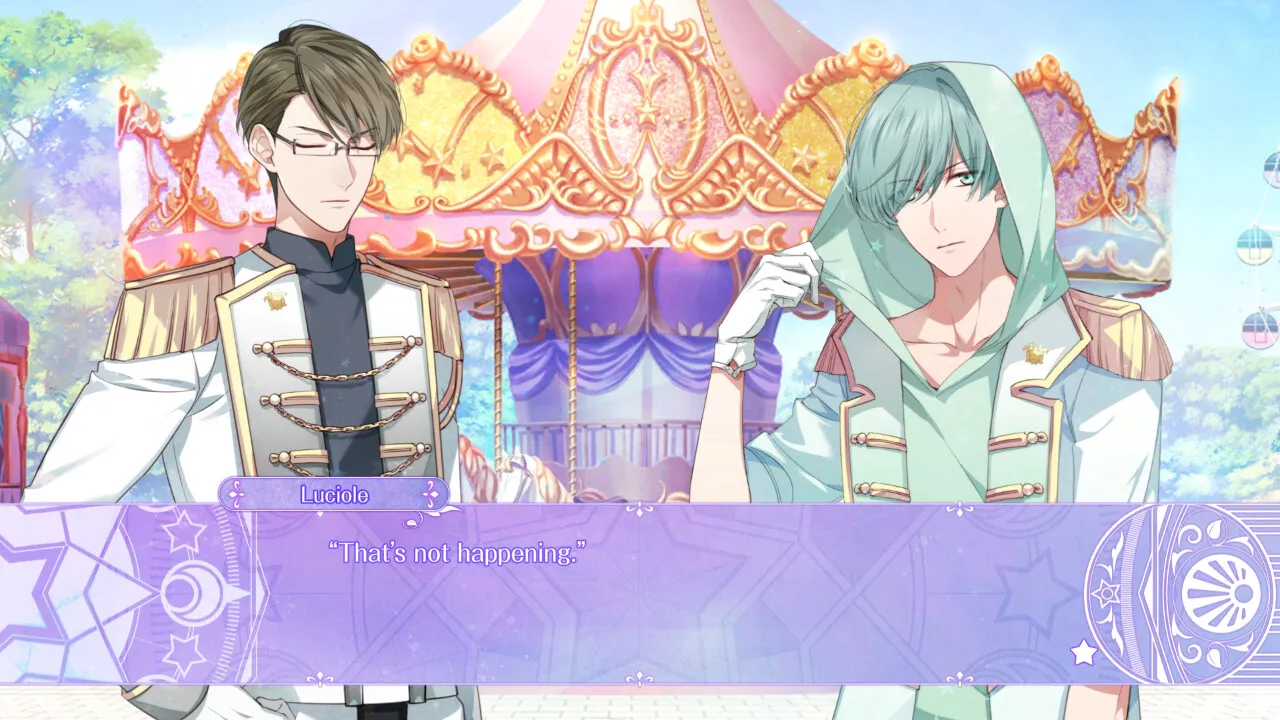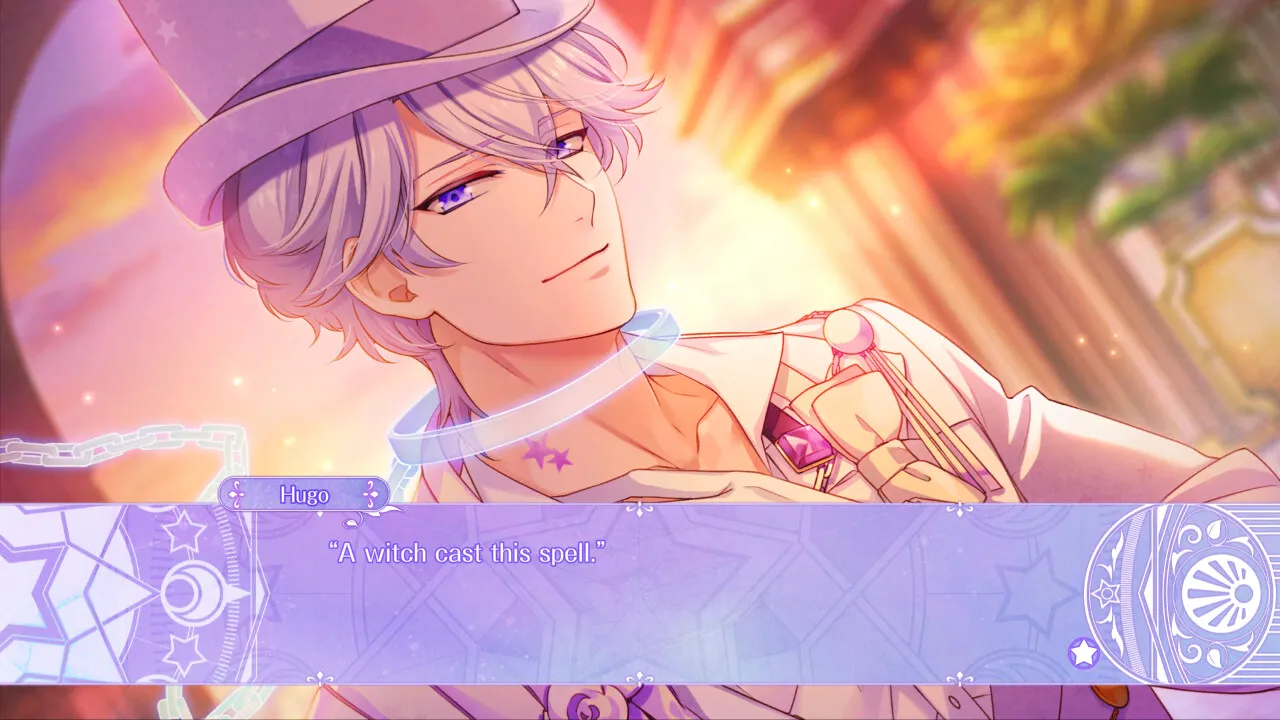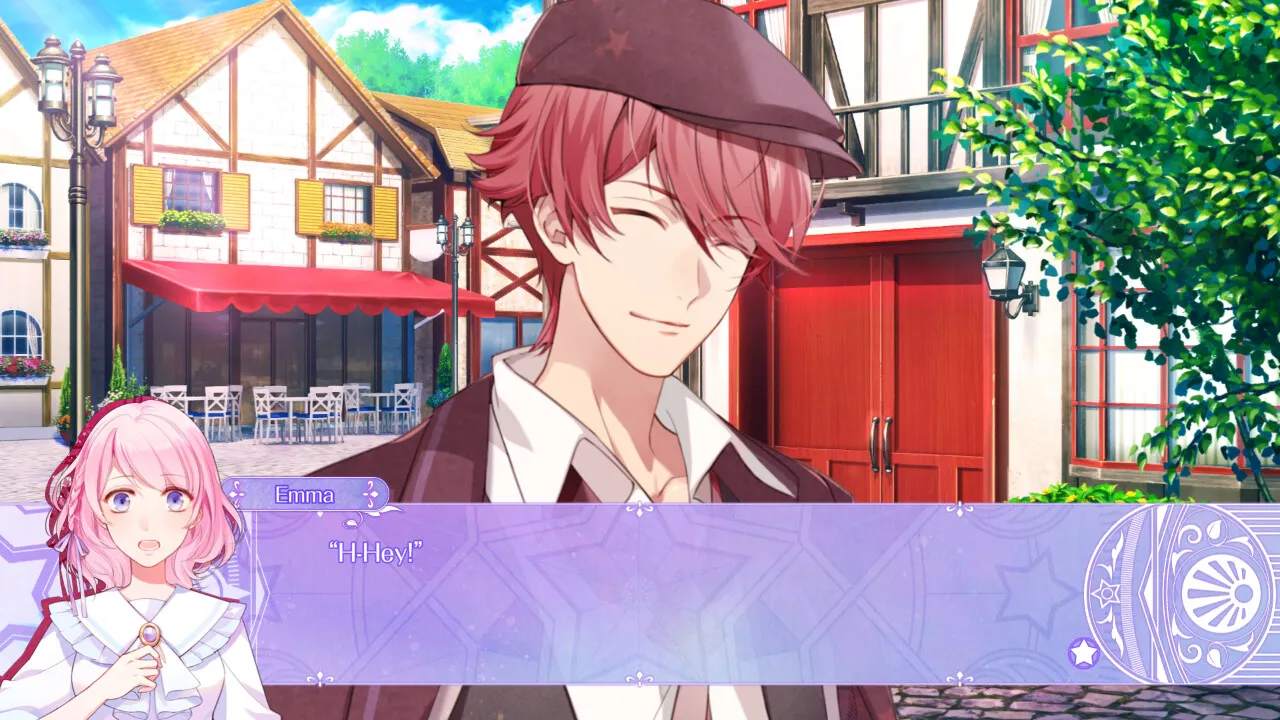Genso Manège presents a narrative centered on Emma, a young woman with gaps in her memory who finds herself immersed in a magical setting. The plot follows her as she contends with the loss of her mystical abilities and attempts to understand the secrets of an enchanted amusement park.
The story introduces a conflict where Emma must face the remnants of a fractured past and restore her lost powers while uncovering the truth behind the park’s mysterious hold on its inhabitants. The visuals, characterized by soft pastel tones, offer a striking contrast to the deeper emotional struggles portrayed through the plot.
The work explores themes of recovery from personal hardship and the challenge of reclaiming what was lost. Emma’s personal development is intertwined with a setting that appears cheerful on the surface but hides a more somber narrative underneath. This design creates a contrast that enriches the experience, as moments of light visual charm intersect with darker story elements.
The game is structured as a visual novel that allows players to make choices that affect the storyline. Interactive elements such as mini-games offer brief reprieves from the narrative, ensuring that the progression of the story remains engaging. This structure prepares the reader for further discussion of the narrative details, character evolution, gameplay mechanics, and the artistic presentation in later sections.
Story and Narrative Structure
Genso Manège sets its stage in an imaginative version of France, where the town of Blancbourg serves as a quiet backdrop to the unfolding drama centered around an enchanted amusement park known as La Foire du Rêve.
The game opens by introducing Emma, a young woman dealing with partial memory loss, whose routine life takes a sharp turn when she visits the park.
This initial step into the mysterious attraction quickly reveals a secret: the park’s inhabitants are held captive by unseen forces. This discovery acts as the spark that drives Emma to confront her past and reclaim the abilities she once possessed.
The narrative centers on several key ideas. Memory loss and the recovery of lost magic stand out as central themes, with Emma’s struggle mirroring the restoration of the park’s hidden truths. Her character arc is marked by gradual personal growth, as she moves from a state of quiet resignation to one of active determination.
The game juxtaposes a visually pleasant, pastel environment with underlying tensions of past trauma and unexplored dangers. This method of contrasting visual cheer with a serious underlying story is reminiscent of other notable entries in the visual novel genre, where surface-level charm often conceals deeper emotional challenges.
The flow of the narrative moves from an initial, almost gentle introduction of Emma’s world, to the slow revelation of the park’s secrets and the gradual return of her magical abilities. Each chapter of the game introduces new layers to the mystery, encouraging players to piece together clues about the park’s nature and Emma’s forgotten past.
Player choices influence how events unfold, leading to multiple potential paths that not only affect romantic connections but also the overall restoration of Emma’s power. The interplay of decision-making and branching storylines is handled with care, ensuring that while the narrative offers freedom, it remains coherent and compelling throughout.
In a way, the structure invites comparisons with other genre titles that manage multiple story branches, rewarding careful attention to dialogue and scene progression without sacrificing narrative integrity.
Characters and Romance Routes Analysis
Emma serves as the focal point of the narrative, marked by her quiet nature and gaps in her memory that challenge her ability to restore lost magic. Her experiences are portrayed with a clear progression in emotional strength as she faces the complexities of her own past and the demands of a mysterious park.
The depiction of Emma emphasizes an inward struggle, capturing moments when her reserved personality clashes with the pressure to reconnect with a forgotten self. Her path reflects an evolution that readers can appreciate alongside other titles in the genre, where character development is carefully mapped out through personal challenges.
Hugo functions as the leader at the park, providing guidance while occasionally exerting a firm presence that can feel restrictive. His role in supporting Emma is highlighted by a mix of authority and care, creating a dynamic that spurs her personal restoration.
Serge contrasts this with a quieter demeanor; his restrained character hides an underlying warmth that gradually unfolds, offering a more balanced influence in Emma’s progression. In contrast, Crier brings an unexpected twist to his route; his cheerful exterior conceals a depth that emerges through sincere interactions with Emma.
His character design introduces moments that disrupt the initial light-hearted portrayal, aligning with narrative techniques seen in similar works within the visual novel sector.
The game also offers additional routes that can be unlocked through specific story choices. Lyon, the character in full mascot attire, introduces an element of mystery and playful investigation alongside Emma. His subplot, which involves uncovering secrets around the park, adds a layer of complexity to the narrative.
Luciole, on the other hand, appears as a reserved figure who is reluctant to engage with magic, gradually revealing protective instincts that influence his evolving relationship with Emma. Arnaud, connected to Emma by familial ties and professional endeavors in journalism, provides a storyline that explores hidden aspects of her background, contributing further to the depth of the narrative.
Other supporting figures contribute to the overall world-building by establishing connections and interactions that enrich the setting. Their individual stories, while secondary, integrate seamlessly into the main narrative and influence the emotional climate throughout the experience.
Gameplay Mechanics and Systems Analysis
Genso Manège follows a traditional text-based format where players read through extensive narrative segments and select choices that shape both the storyline and character interactions.
The design offers a network of branching paths, with decisions that impact the direction of character relationships and the overall progression of events. This structure invites careful consideration at each juncture, echoing elements found in other works within the visual novel category.
A notable feature is the mini-game that plays a role in the restoration of Emma’s lost magical abilities. In this segment, players are tasked with collecting stars that appear on screen while contending with a timing challenge as the magic meter fills.
The mechanics require precise timing, as players must press a designated button at the right moment to register a successful action. After completing the initial tutorial, the game provides an option to bypass the mini-game in later sessions, allowing the narrative to continue at a steady pace for those who prefer to focus on story progression.
The control scheme accommodates various play styles on the Nintendo Switch. Users can utilize the Joy-Con controllers or take advantage of touchscreen input in Tabletop or Portable modes, with full support on the Switch Lite. The interface includes features such as dialogue skipping and manual saving, which streamline the experience and make it easier for players to revisit different narrative routes without unnecessary repetition.
There are some technical observations regarding system performance. For instance, occasional challenges with text layout and minor resolution discrepancies appear on certain screens. These issues are limited in scope and do not significantly disrupt gameplay. The overall system is designed to encourage multiple playthroughs, as each route offers distinct endings and character developments, providing ample incentive for exploring various narrative outcomes.
Visuals, Art, and Sound Analysis
The artistic presentation in Genso Manège relies on a palette dominated by pastel tones, creating a visually soft and delicate atmosphere. The character illustrations are rendered with meticulous detail, and the unlockable CG scenes provide moments of heightened visual storytelling.
The imagery serves to soften the weight of the underlying narrative, offering players moments of visual respite while hinting at darker themes beneath the surface.
The user interface is designed with smooth, flowing transitions that enhance the overall immersion. Detailed screen effects and creative design choices contribute to an engaging visual experience, making scene changes feel both natural and polished. The attention given to the arrangement of dialogue boxes and menu systems ensures that the player’s focus remains on the unfolding story without distraction.
The audio design plays a significant role in setting the tone of the game. The opening theme and background scores are carefully chosen to match the mood of the game, reinforcing moments of tension or introspection as the story develops.
The Japanese voice acting is notable for its depth, with each performance adding nuance to the characters’ emotional expressions. This quality of sound elevates the narrative, much like what is observed in other notable titles within the genre.
Together, the visuals and sound work in tandem to create an immersive experience. The harmonious blend of artistic design and audio cues not only reflects the thematic contrasts present in the game but also enriches the overall storytelling, ensuring that each element contributes meaningfully to the player’s engagement.
World-Building and Setting Analysis
Genso Manège constructs its setting around an imaginative take on France, with the town of Blancbourg serving as the central stage. This town combines elements of historical charm with hints of a magical past, creating a setting that feels both familiar and otherworldly.
The careful attention to the town’s architecture and ambient details paints a picture of a place where traditional French influences coexist with elements that defy everyday expectations.
At the heart of the narrative is La Foire du Rêve, an amusement park that operates on multiple levels. As a physical location, the park is filled with attractions that invite exploration. Its magic-infused rides and hidden corners serve as a backdrop for the unfolding story, offering scenes that are visually captivating.
At the same time, the park acts as a symbol of the interplay between moments of happiness and underlying sorrow, reflecting the inner conflicts experienced by the characters. This dual role of the park helps drive the narrative by revealing secrets and deepening the mystery behind its existence.
The game makes effective use of environmental storytelling through subtle visual cues and background details. Extras such as the CG Gallery provide additional context, offering players glimpses into the broader lore and encouraging a closer examination of the setting. These elements work together to enhance understanding of the themes and character motivations, ensuring that every visual detail contributes to the overall narrative fabric of Genso Manège.
Additional Features and Extras
Genso Manège includes unlockable content that adds further layers to the narrative. The CG Library and Sound Library offer glimpses into character backgrounds and important story moments, while special extras enrich the overall lore. These elements provide added context and reward exploration beyond the main storyline.
The game supports multiple romance routes with a recommended unlocking order that guides players through various character perspectives. This structure encourages revisiting key narrative segments, where alternative decisions reveal hidden details and different story outcomes.
A comprehensive game manual accompanies the release, presenting detailed character profiles and clear guidance for navigating the narrative. The quality of the script localization stands out, ensuring that dialogue and story details remain accessible and engaging, much like other titles within the visual novel genre that place a strong emphasis on storytelling precision.
The Review
Genso Manège
Genso Manège offers an engaging experience with rich narrative depth, detailed character arcs, and thoughtfully integrated gameplay elements. Its colorful visual design and atmospheric audio support a story that intertwines personal growth with mystical intrigue. Interactive mini-games, branching paths, and unlockable extras encourage repeated playthroughs, while refined localization makes the dialogue accessible. Minor technical challenges do arise, yet they do little to detract from the immersive nature of the game. Overall, the experience remains solid within its genre.
PROS
- Engaging narrative and detailed character arcs
- Immersive visuals with a soft pastel aesthetic
- Multiple romance routes offering varied experiences
- Interactive mini-games that complement the story
CONS
- Occasional text display and resolution issues
- Repetitive mini-game mechanics









































